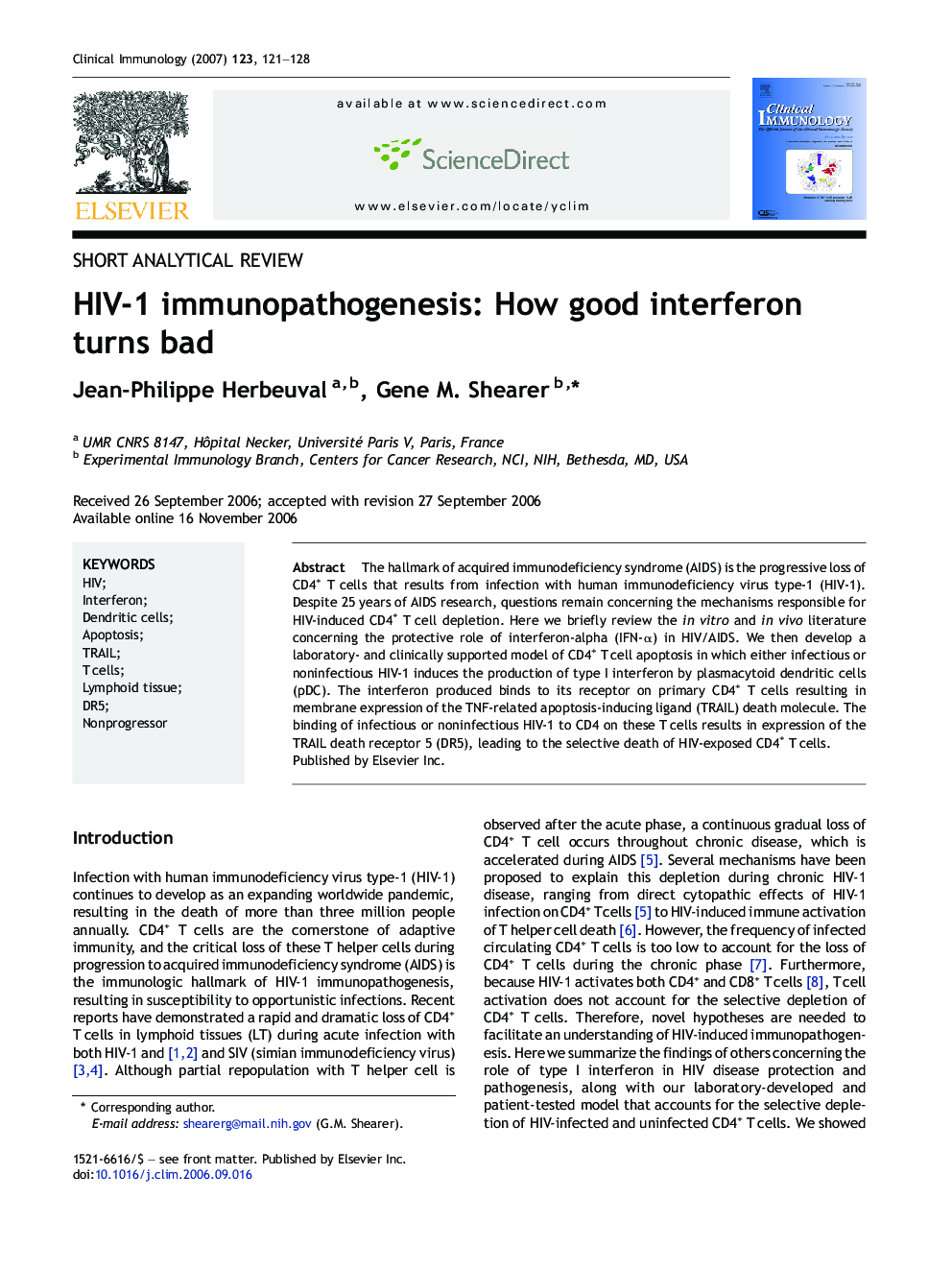| کد مقاله | کد نشریه | سال انتشار | مقاله انگلیسی | نسخه تمام متن |
|---|---|---|---|---|
| 3258491 | 1207458 | 2007 | 8 صفحه PDF | دانلود رایگان |

The hallmark of acquired immunodeficiency syndrome (AIDS) is the progressive loss of CD4+ T cells that results from infection with human immunodeficiency virus type-1 (HIV-1). Despite 25 years of AIDS research, questions remain concerning the mechanisms responsible for HIV-induced CD4+ T cell depletion. Here we briefly review the in vitro and in vivo literature concerning the protective role of interferon-alpha (IFN-α) in HIV/AIDS. We then develop a laboratory- and clinically supported model of CD4+ T cell apoptosis in which either infectious or noninfectious HIV-1 induces the production of type I interferon by plasmacytoid dendritic cells (pDC). The interferon produced binds to its receptor on primary CD4+ T cells resulting in membrane expression of the TNF-related apoptosis-inducing ligand (TRAIL) death molecule. The binding of infectious or noninfectious HIV-1 to CD4 on these T cells results in expression of the TRAIL death receptor 5 (DR5), leading to the selective death of HIV-exposed CD4+ T cells.
Journal: Clinical Immunology - Volume 123, Issue 2, May 2007, Pages 121–128